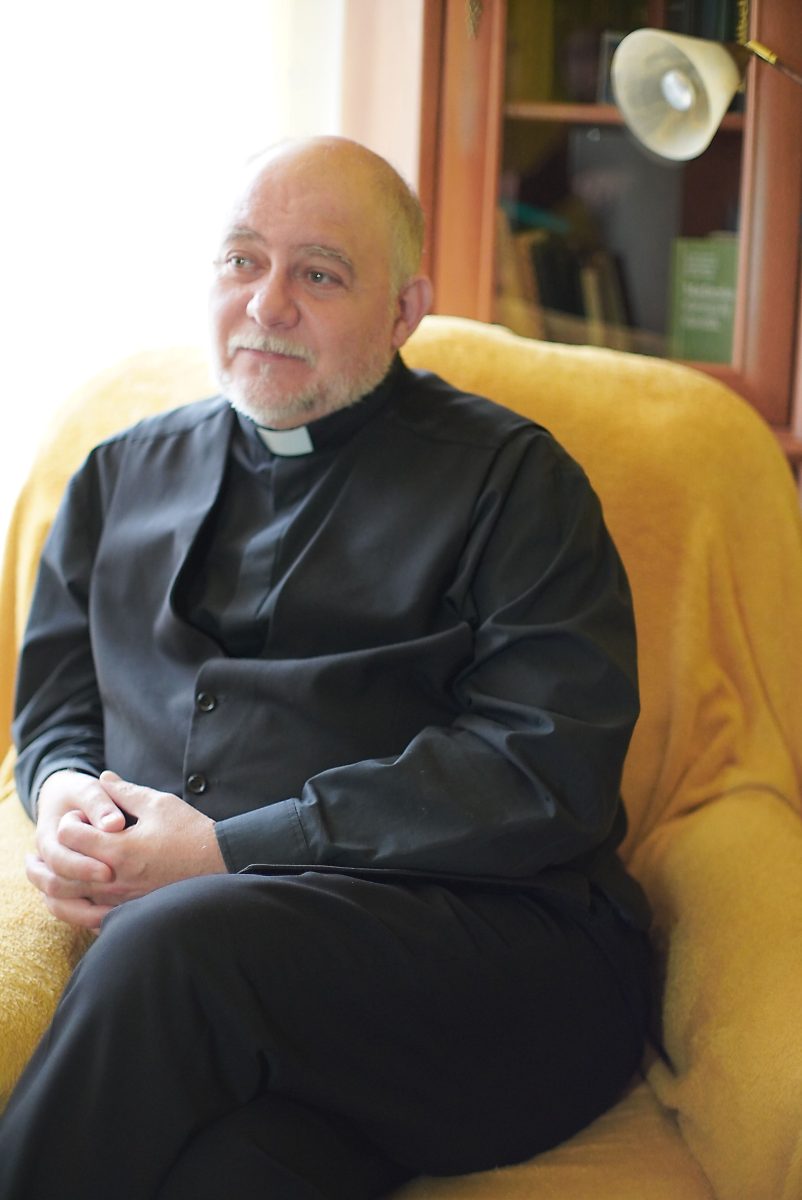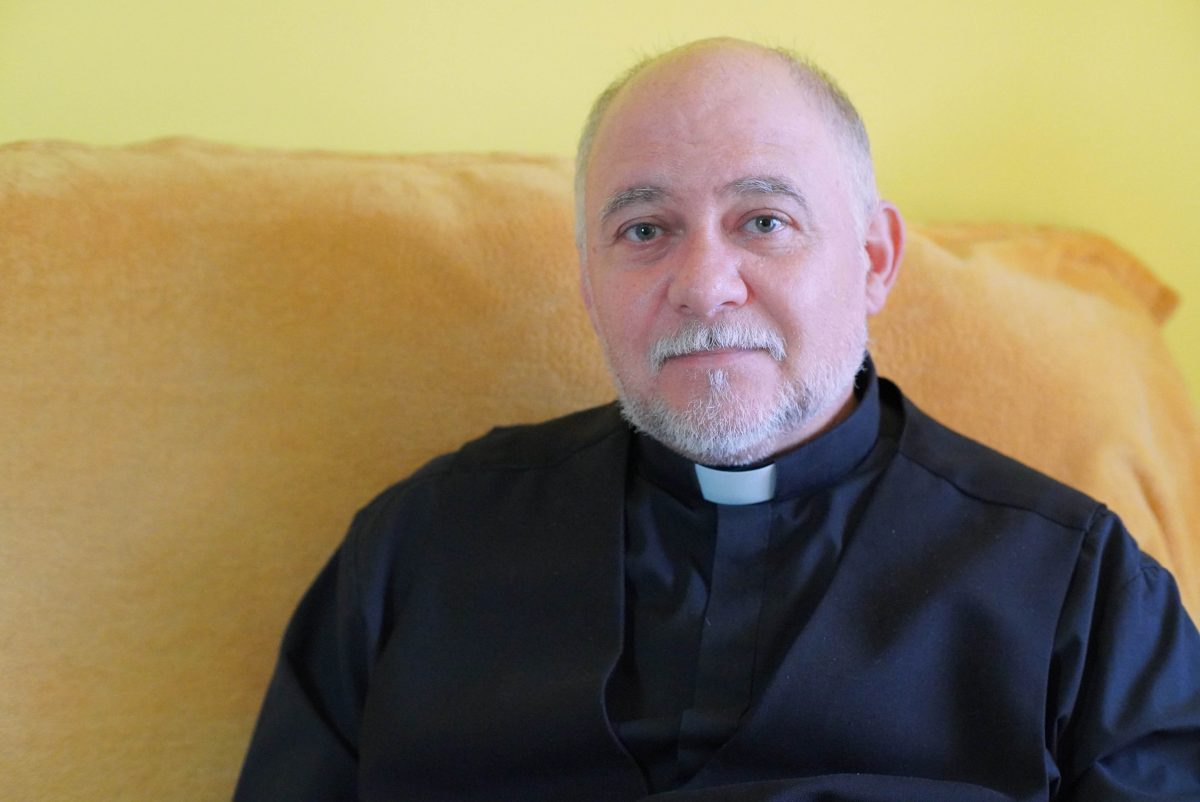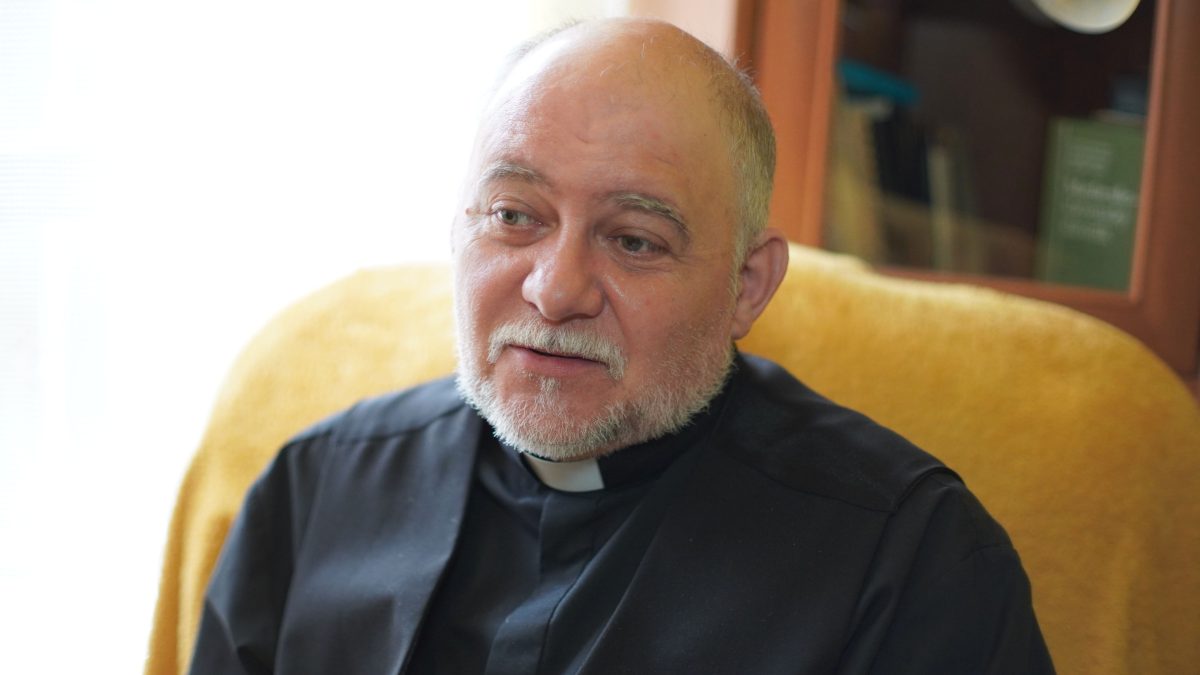
Mission Statement
October 6, 2025
Deificari in otio
October 28, 2025
Attila Mohos spoke with Dr. Zoltán Keresztély Drenkó OESG, a Williamite priest, about the monastic vocation, the eremitic life, Christian spirituality, and the contemporary mission of the Order within the Old Catholic Church.
A. M: Dear Father Keresztély, many stereotypes persist in people’s minds about monks: that they are naïve, not fit for life, or that they enter monastic life as an escape from failure — retreating from the world, living as pious dreamers detached from reality. In your view, what is a monk really like in the 21st century?
Fr. Keresztély: Even today, many associate monastic life with mysticism, renunciation, or even a kind of estrangement from life. Some might think that it represents an escape from reality. I see it quite the opposite: monastic life is an encounter with the deepest dimension of reality. Monastic life is not a rejection of the world, but a prophetic presence within it. In both the Old and the New Testament, the prophet proclaims the Word of God to the people while maintaining a certain distance from worldly powers. The monk fulfills a similar mission: he does not reject the world but illuminates its deeper meaning with the Word of God. In silence, in prayer, in community, and in service, a person comes face to face with oneself and with God and this is the hardest, yet truest, reality. The 21st-century monk participates fully in the life of society, yet constantly strives to make the light of Christ visible. He does not dwell in a dream world, but in the reality of the Gospel, in the conviction that love, self-surrender, and simplicity remain possible even today.
A. M: What was your personal motivation, why did you join the Order of Saint William?
Fr. Keresztély: I have always been drawn to silence, simplicity, and a life turned toward God — to the longing for inner truth and the deepening of my relationship with the Divine. In the Order of Saint William, I found what Saint Augustine himself sought: the harmony of prayer, work, and fraternal love. The example of Saint William of Malevalla — his life of penance, conversion, and the pursuit of purity of heart — touched me deeply. I felt that this spirituality corresponds to what I was searching for: a life attentive to God, yet open, humane, and dedicated to service.
A. M: In what way is the life of an Old Catholic monk different from that of a diocesan priest?
Fr. Keresztély: The difference lies mainly in lifestyle and emphasis. A diocesan priest lives amid the daily concerns, joys, and responsibilities of his parish community. The monk’s life, on the other hand, is shaped by prayer, by the order of the Rule, and by interior contemplation. According to tradition, he thus becomes a living icon of love, reflecting the unity of the Father, the Son, and the Holy Spirit. Therefore, it is not so much the tasks that differ, but rather the way of ecclesial existence. The specific mission of the Old Catholic monk is to build a bridge between the tradition of the first millennium and the modern world, to be a credible and living witness of faith for the people of today.
A. M: In your view, what is the mission of a Williamite monk and of the Order itself in today’s world?

Fr. Keresztély: The mission of the Williamite Order today is the same as it was at its foundation: the service of conversion and reparation. This remains relevant, even though the concepts of sin and atonement have taken on new meanings. Today we must speak not only of personal sins but also of structural and social sins: the exploitation of creation, injustice, and indifference. Thus, we pray and work not only for our own conversion, but also for our communities, for the created world, and for the healing of human relationships. The Order’s task is to represent the theology of silence, a space where the human heart learns once again to be still, to listen, and to hear the Word of God. The prayer of the Williamites is intercession: bringing the wounds of humanity before God.
A. M: How does asceticism and renunciation appear in your life? In what way do you seek to follow the example of Saint William of Malevalla?
Fr. Keresztély: Asceticism is not a form of self-inflicted suffering, but synergy: cooperation with the Holy Spirit. In the spirituality of the Williamites, asceticism mirrors the theology of the Incarnation: if God became man, then the human person can also be transformed into the image of God. The asceticism of Saint William is therefore not self-destructive, but Eucharistic, a sacrifice of life flowing from gratitude. Fasting, silence, prayer, simple meals, moderation, daily work, and service are all means by which Christ may be “formed” in us (cf. Gal 4:19).
M. A.: Can the Williamite Order reach the Old Catholic faithful of today? What can the Order offer to believers?
Fr. Keresztély: I truly believe it can. Modern people are not so much looking for instruction as for authentic example. A monastic community — if it is truly evangelical — is a sacramental presence in the world. This is what we Williamites can offer. Thus, prayer, fraternity, and simplicity of life are not relics of the past, but sources of spiritual healing.
M. A.: In what way does sanctification, the call to holiness support the Nordic Catholic Church?
Fr. Keresztély: The Church truly lives only when it has members who live holy lives. Sanctification is not an abstract idea; it is the willingness to let Christ shape us. The monastic life plays a vital role in this, for it is the “spiritual lung” of the Church, keeping her attentive to God through prayer, reparation, and quiet presence. When more people within the Church strive for holiness, it is not only for their own salvation, but for the good of the entire community, for a holy life is always a light that draws others to God.
A. M: Finally, what message would you give to readers who are searching for their vocation or for inner peace?
Fr. Keresztély: I would tell them not to be afraid of silence, for silence is not emptiness, but fullness. God speaks in silence. You do not need to withdraw from the world to find Him: it is enough to make room for Him in your heart. Monastic life is a school of this continual “making space” for God, but the same possibility lies hidden within every Christian: to live in God’s presence, in love, and in simplicity.





